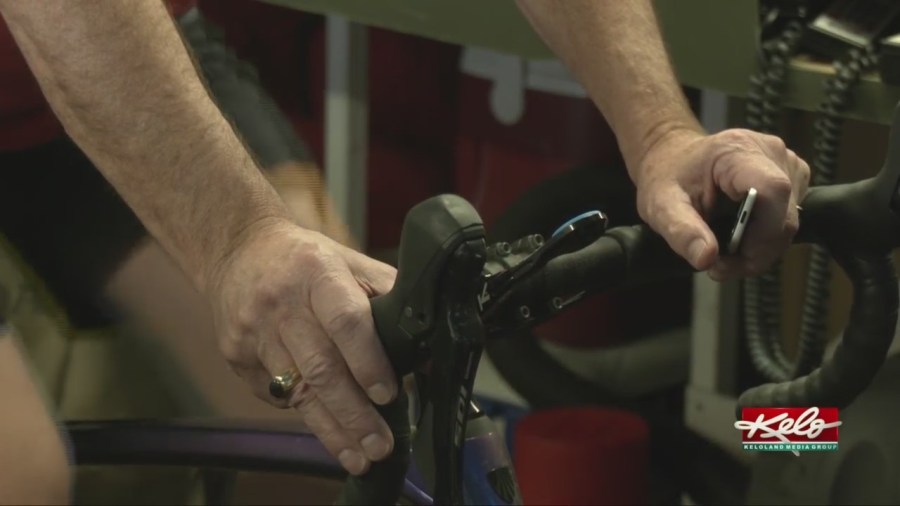SIOUX FALLS, S.D. (KELO) — Inside his Sioux Falls home, Matt Pepper bikes hundreds of miles during the winter next to his model train display.
“It’s the only place I had to put the bicycle. I love model railroading. I’m a member of the club out at the fairgrounds,” Matt Pepper said. “It’s just something to do in the wintertime.”
Biking, both next to his display and outside during the summer, has been a passion of Pepper’s for years. What he didn’t know, in 2011, was the road ahead of him was about to look a little different.
He visited the Sioux Falls Sanford Heart Hospital for a heart and vascular screening.
“At that time, my vascular screening was fine. My calcium score was right at 100, which is about where they question if you have any problems. Then, they found like three of the major arteries in my heart had like 25 to 30% blockages, but that was not a big deal,” Pepper said.
16-year-old dies from exposure to freezing temps
So, he returned in 2021 for a follow-up. That’s when doctors told him his widowmaker artery, the largest artery in the heart, was blocked. Pepper would need open-heart surgery to save his life.
“After I woke up from the surgery, it was scary. I didn’t realize how invasive everything was,” Pepper said. “I thought I got this because I’m in shape. But then when I could hardly do any of the rehab right away, I thought, that was my first question, am I going to get to bike again? And my doctor was like, ‘you will, but you got to take it easy.'”
Through Sanford’s Cardiac Rehabilitation program, Pepper slowly started to rebuild his strength.
“When we do an exercise test the first time, it’s working on progressing the time and then the intensity of exercise by 40% after three sessions. And so, a lot of the patients will work up to that,” Sanford Health cardiac rehabilitation exercise specialist Christian Aguilar said.
But it wouldn’t be the last time Pepper would go through the program. Pepper suffered a heart attack in 2023 and returned to Sanford Hospital.
“He approached it a little bit slower, but I think he was more so on edge of precaution. He understands what it felt like before when he had his events, so like how can I progress still and not have those events occur again? And so, with that, we were able to see that progression right off the bat and we were able to kind of determine what his exercise levels could be,” Aguilar said.
In January this year, Pepper experienced another heart episode, but the doctors at Sanford were able to provide him with the care he needed in time.
“After three or four days of testing, I found out that I have two more blocked arteries in my heart,” Pepper said. “They’re real small ones that come off the circumflex artery and are too small to put stents in. They just gave me some medication so they will kind of rework themselves.”
But Pepper is in good spirits and says he’s doing well today. So much, that he can even bike next to his train display that’s taken 15 years to build and paint.
He hopes his story can also be a model of its own.
“My dad and my grandpa and grandma and aunt and uncle all died of heart disease in their late sixties, early seventies. I was 63 when I had my open-heart surgery. But like I said, you know, I thought that’s not going to happen to me,” Pepper said. “But it did, even though I take care of myself.”
It’s fueled by an even greater level of thanks to his care team.
“For for the great care in saving my life,” Pepper said.
Sanford Health recommends getting screened every ten years for those between the ages of 40 and 75. Your doctor can also recommend a screening based on your family history and other risk factors.







